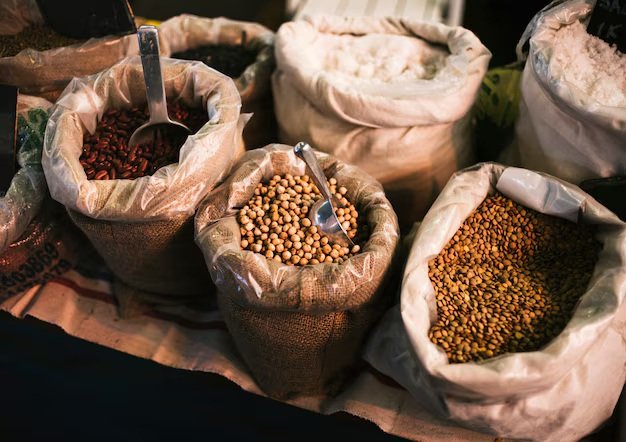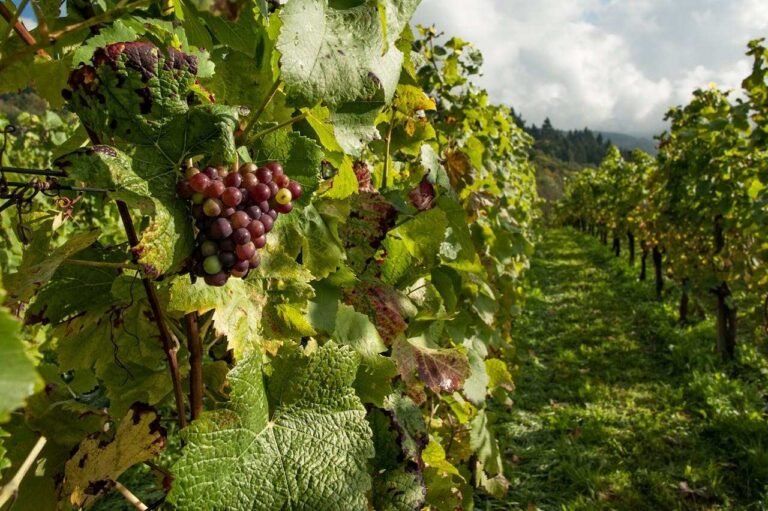Sustainable Agriculture and Farming: A Comprehensive Guide
Imagine standing on a farm where the soil is dry and lifeless, where once-thriving crops struggle to grow, and where farmers worry about the next season’s harvest. This is the reality for millions around the world as climate change, soil degradation, and food insecurity become pressing challenges.
At the same time, global food demand is projected to increase significantly by 2050 due to population growth and rising incomes. The Food and Agriculture Organisation (FAO) estimates that feeding a world population of 9.1 billion people in 2050 will require raising overall food production by approximately 70% between 2005/07 and 2050. But how do we do that without destroying the planet in the process?
That’s where sustainable agriculture comes in. Instead of exhausting the land, it focuses on farming methods that work with nature, not against it. Farmers, scientists, and policymakers are shifting their focus to eco-friendly techniques that restore ecosystems while ensuring that we have enough food for generations to come.

In This Article
- What Is Sustainable Agriculture?
- Sustainable Farming Practices
- Water Conservation Strategies
- Organic vs. Conventional Farming
- Economic Viability of Sustainable Farming
- Challenges and Solutions
- Actionable Steps for Farmers and Consumers
- Conclusion
What Is Sustainable Agriculture?
Sustainable agriculture is farming in a way that protects the environment, supports farmers’ livelihoods, and ensures communities have access to nutritious food. Here are the five key principles that define sustainable farming:
1. Soil Health Preservation
Healthy soil is the foundation of good farming. When soil is alive with nutrients and microorganisms, it can support better crop growth, retain water, and prevent erosion. Techniques like cover cropping, composting, and crop rotation help maintain soil fertility naturally.
2. Water Conservation
Water is one of the most precious resources in agriculture. Sustainable farming minimises water waste by using efficient irrigation methods like drip irrigation, rainwater harvesting, and mulching to keep moisture in the soil.
3. Biodiversity Protection
A thriving ecosystem means healthier crops and fewer pests. Instead of relying on harmful pesticides, sustainable farming encourages biodiversity by planting different types of crops, protecting pollinators like bees, and integrating trees into farmland (agroforestry).
4. Reducing Chemical Inputs
Excessive use of synthetic fertilisers and pesticides harms the environment and human health. Sustainable farmers turn to organic compost, natural pest control methods, and crop diversity to reduce the need for chemicals while still ensuring high yields.
5. Enhancing Farm Resilience
With unpredictable weather and climate-related challenges, farmers need resilience. Sustainable farming helps build that resilience by improving soil health, conserving water, and diversifying crops so that farms can withstand droughts, floods, and pests.
The Science Behind It
The advantages of sustainable farming are well-supported by scientific research. A study published in Agriculture, Ecosystems & Environment demonstrated that agroecological practices can maintain satisfactory crop yields and soil fertility without the need for intensive chemical inputs. This means that farming in harmony with nature fosters healthier ecosystems without compromising food production.
Dr. Vandana Shiva, a renowned environmental activist, emphasizes the significance of sustainable agriculture, stating, “In nature’s economy, the currency is not money, it is life.” Her perspective shows that sustainable farming transcends mere agricultural techniques; it embodies a philosophy that honors natural cycles and strives to preserve fertile lands for future generations.
Sustainable Farming Practices
1. Regenerative Agriculture
Imagine treating the soil not just as dirt but as a living, breathing entity. Regenerative agriculture does just that by focusing on revitalising soil health. Key techniques include:
- No-Till Farming: By avoiding ploughing, farmers prevent soil erosion and improve water retention.
- Cover Cropping: Planting cover crops like legumes during off seasons protects the soil from erosion and enhances its organic content.
- Composting and Organic Fertilisation: Using natural compost enriches the soil with essential nutrients and promotes beneficial microbial activity.
Case Study: Regeneration Success in Nigeria
In Nigeria’s Jigawa State, a transformative initiative is underway. RegenFARM, in collaboration with local partners, is developing a platform to support 10,000 farmers transitioning to regenerative agriculture. This project aims to restore degraded lands, improve crop yields, and enhance economic resilience in the region.
2. Agroforestry
Picture a farm where trees and crops coexist harmoniously. Agroforestry integrates trees into agricultural landscapes, offering multiple benefits:
- Enhanced Soil Fertility: Trees contribute organic matter to the soil, improving its structure and nutrient content.
- Carbon Sequestration: Trees absorb carbon dioxide, helping mitigate climate change.
- Biodiversity Boost: The varied habitat supports diverse plant and animal species.
Example: ThriveAgric’s Initiative in Nigeria
In Nigeria, agritech company ThriveAgric, led by CEO Uka Eje, is piloting a program where farmers plant fruit-bearing trees like mango and guava alongside traditional crops such as corn, rice, and soybeans. This approach not only diversifies income but also contributes to carbon sequestration, allowing farmers to earn carbon credits.
3. Integrated Pest Management (IPM)
Dealing with pests doesn’t have to mean dousing fields in chemicals. IPM offers a balanced approach by:
- Encouraging Natural Predators: Introducing beneficial insects like ladybugs to control aphid populations.
- Crop Rotation: Changing crop types seasonally to disrupt pest life cycles.
- Using Biopesticides: Applying naturally derived substances to deter pests.
Impact of IPM
A study published in Proceedings of the National Academy of Sciences demonstrated that IPM strategies could reduce insecticide applications by up to 95% while maintaining or even enhancing crop yields through the conservation of wild pollinators.
Learn More: How Does Industrial Agriculture Promote Farming Techniques that are Ecologically Destructive?
Water Conservation Strategies
Water scarcity is a growing concern for farmers worldwide, impacting crop yields and livelihoods. Sustainable water management includes:
1. Drip Irrigation
Drip irrigation delivers water directly to plant roots, minimising waste and improving crop efficiency. A seven-year study in Northwest China found that drip irrigation reduced water usage by 180 mm, increased maize yield by 14.39%, and improved water use efficiency (WUE) by 53.77% compared to conventional border irrigation.
Similarly, a meta-analysis on drip fertigation across multiple crops, including maize and wheat, demonstrated a 12.0% increase in yield and a 28.9% improvement in WUE. Research on rice cultivation showed that optimising water and nitrogen management under drip irrigation resulted in a 51.7% yield increase and an 84.2% improvement in nitrogen use efficiency.
Additionally, a study on turmeric production revealed a 39.79% increase in fresh rhizome yield with drip irrigation and plastic mulch. These findings highlight the significant advantages of drip irrigation in reducing water consumption while enhancing crop productivity across diverse agricultural systems.
2. Rainwater Harvesting
Collecting and storing rainwater provides a supplementary water source during dry periods. In Senegal, rainwater harvesting systems have enabled farmers to collect up to 5,000 litres over six months, sustaining crops throughout the dry season. In California, a homeowner’s rainwater system reduced daily water consumption from 124 to 39 gallons, demonstrating significant conservation potential.
3. Mulching
Applying organic materials like straw or wood chips around plants helps retain soil moisture, suppress weeds, and regulate temperature. While specific recent studies are limited, mulching is widely recognised for its role in conserving water and improving soil health.
4. Innovative Techniques: Fog Harvesting
In regions with frequent fog, such as the Canary Islands, ‘cloud-milking’ captures water droplets from fog using specialised mesh structures. This zero-energy method supports reforestation and provides water for irrigation, offering a sustainable solution in arid areas.
Organic vs. Conventional Farming
1. Chemical Use
Organic farmers rely on natural methods to keep their crops healthy, using things like compost and natural pest control. This means fewer synthetic chemicals end up in the soil and water. Conventional farming, on the other hand, often uses synthetic fertilisers and pesticides to boost crop yields and protect against pests. While effective, this can lead to chemical residues in the environment.
2. Soil Health
Healthy soil is the foundation of farming. Organic practices, such as rotating crops and adding organic matter, help maintain and improve soil fertility over time. Conventional methods may not always prioritise soil health, sometimes leading to degraded soil that can’t hold nutrients or water as well.
3. Environmental Impact
Organic farming tends to be gentler on the environment. By avoiding synthetic chemicals and focusing on sustainable practices, it supports biodiversity and reduces pollution. Conventional farming’s intensive use of chemicals and monocultures can contribute to pollution and loss of wildlife habitats.
4. Yield Stability
When it comes to how much food is produced, conventional farming often has the upper hand in the short term, thanks to its use of advanced technologies and chemicals. However, organic farming can offer more stable yields over the long term, especially as the soil becomes healthier and more resilient.
Recent Insights
A 2024 study highlighted that organic farms support greater biodiversity compared to conventional ones, which is crucial for a healthy ecosystem. Additionally, research from 2012 found that while organic yields are generally lower, they can nearly match conventional yields for certain crops and conditions.
Elaine Ingham, a respected soil microbiologist, puts it this way: “Organic farming is an investment in the future of our planet. The short-term yield loss is outweighed by long-term sustainability.”
Economic Viability of Sustainable Farming
Is Sustainable Farming Profitable?
While the upfront investment in sustainable agriculture—such as adopting organic methods, implementing integrated pest management, or diversifying crops—can be significant, the long-term financial gains often outweigh these initial expenses. Farmers frequently experience reduced costs due to decreased reliance on synthetic fertilisers and pesticides. Additionally, there’s a growing market demand for organic and sustainably produced food, allowing farmers to command premium prices. Government incentives and carbon credit programs further bolster the economic appeal of sustainable practices.
Case Study: Profitable Sustainability in India
In the Chhindwara region of Madhya Pradesh, India, local farmer Sagar Dhomne transitioned from conventional genetically modified (GMO) cotton farming to organic practices. This shift involved using natural fertilisers and pest repellents, aiming to regenerate the region’s soil and biodiversity sustainably. Although the transition initially reduced yields, the lower costs led to better soil health and, eventually, increased profits. The project aspires to convert 6,000 farmers to organic practices, preserving the environment and improving livelihoods. However, challenges remain, including threats from wildlife and pervasive poverty exacerbated by debt cycles from failed GMO crops. The initiative also actively involves women in producing and selling biofertilizers and biopesticides, forming cooperatives to negotiate better prices for their produce.
Learn More: How to Start Vertical Farming At Home
Challenges and Solutions
Challenges:
- Initial Transition Costs: Shifting to sustainable practices often requires upfront investments in new equipment, seeds, or infrastructure. For smallholder farmers, these costs can be daunting.
- Knowledge Gaps: Embracing new farming methods necessitates understanding complex techniques like crop rotation, organic fertilisation, and integrated pest management. Without proper guidance, farmers may struggle to implement these practices effectively.
- Market Accessibility: Even after adopting sustainable methods, farmers may face difficulties accessing markets that value and are willing to pay a premium for sustainably produced goods.
Solutions:
- Government Grants and Subsidies: Financial support from governments can ease the burden of initial transition costs. For instance, in Zimbabwe, programs funded by USAID have assisted farmers in adopting climate-smart agriculture, helping them shift to drought-tolerant crops and implement solar-powered irrigation systems.
- Farmer Education and Extension Services: Training programs are vital. In Kenya, organisations like One Acre Fund have provided comprehensive support to over 4.8 million farmers, offering training and resources that have led to increased incomes and improved food security.
- Strengthening Local Food Networks: Building robust local markets ensures that farmers have reliable outlets for their sustainably produced goods. In South Africa, initiatives like community gardens have promoted diverse cropping systems, enhancing both food security and market access.
Actionable Steps for Farmers and Consumers
For Farmers:
- Start Small with Soil Regeneration: Begin by introducing cover crops during off-seasons. These plants protect and enrich the soil, reducing erosion and enhancing fertility. For instance, the University of Washington Farm’s regenerative practices led to a fourfold increase in topsoil thickness over 20 years, significantly boosting soil health.
- Diversify Your Crops: Planting a variety of crops can improve soil structure and reduce pest outbreaks. This approach not only enhances resilience but also opens up new market opportunities.
- Gradually Reduce Synthetic Chemicals: Slowly decreasing the use of synthetic fertilisers and pesticides can improve soil health and reduce costs. Many farmers find that as soil quality improves, the need for chemical inputs diminishes.
- Seek Financial Support: Explore local or government programs that offer funding for sustainable initiatives. For example, subsidies for cover cropping have motivated many farmers to adopt this practice, leading to improved soil quality and water infiltration.
For Consumers:
- Advocate for Sustainable Policies: Support policies and initiatives that promote regenerative farming. Consumer demand has a powerful influence; studies show that 78% of U.S. consumers consider a sustainable lifestyle important, and many are willing to pay more for sustainably produced goods.
- Support Local, Sustainable Farms: Purchasing from local farmers who use sustainable methods helps reduce carbon emissions associated with long-distance transportation and supports the local economy.
- Be Mindful of Food Waste: Plan meals and store food properly to minimise waste. Reducing food waste not only saves money but also lessens the environmental impact associated with food production and disposal.
Conclusion
Sustainable agriculture is not just a farming method; it’s a movement toward a healthier planet and future generations’ well-being. With the right strategies, education, and support, both farmers and consumers can contribute to a resilient food system.
“The soil is the great connector of our lives, the source and destination of all.” – Wendell Berry







